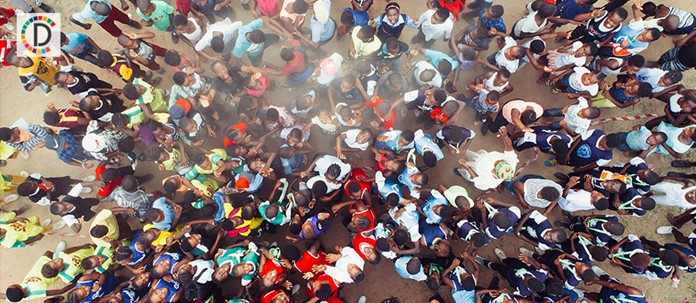Ayodhya's aftermath changed Mumbai, leaving scars of communal

- Country:
- India
While the Supreme Court's judgment in the Ayodhya dispute has brought a closure to the Ram Janmabhoomi-Babri Masjid dispute, the communal riots which followed the demolition of the mosque left an indelible scar on far-away Mumbai. The Supreme Court on Saturday allowed the construction of a Ram Temple at Ayodhya, and directed the Centre to allot a 5-acre plot to the Sunni Waqf Board for building a mosque.
But the period from December 6, 1992, when the Babri mosque was demolished, and March 12, 1993, when serial blasts rocked Mumbai, changed the city's cosmopolitan character forever, some social commentators later observed. The riots claimed more than 700 lives and also led to migration of a large section of the minority community to suburbs outside the city. Mumbai Police faced opprobrium for alleged bias in the handling of the situation during the period.
The serial blasts which followed the riots killed at least 257 people and maimed over 700, providing a deadly climax to the traumatic period. "Whatever we did (to contain the riots) was to the best of our ability in the given situation. We did whatever was humanly possible," said then police commissioner of Mumbai Shrikant Bapat, who was shunted out after the riots.
The riots unfolded in two phases -- immediately in the aftermath of the demolition of the mosque, and later, in January, when six persons were killed at Radhabai chawl in suburban Jogeshwari. It all started with protests in Pydhonie area on the night of December 6 as some people sought to celebrate the demolition of the mosque, said a police officer who worked in the city during the period.
In the next few days, a full-fledged riot erupted which became almost uncontrollable, he said. The police themselves had a hard time dealing with angry mobs. At Jogeshwari, a police officer died due to a bullet injury to the head, while another policeman was attacked in Grant Road area.
The police were accused of excesses and communal bias, especially in the case of killing of nine men inside Suleman Bakery on January 9, 1993. While the police maintained that they opened fire on 'rioters' hiding inside the bakery in self-defence, surviving victims alleged that they were innocent, and police had fired without any provocation.
Gulzar Khan, a businessman from Dharavi in Central Mumbai, recalled the violence and looting which he witnessed during the period. Khan, who was then eight years old, said, "It was like chaos in our area. Curfew was imposed. Hatred was in the air everywhere.
"People who had lived together for years were divided on communal lines by the violence," he said. Gulzar was the face of Mumbai Police's iconic 'Hum Sab Ek Hain' initiative, launched in 1995 to encourage communal harmony.
"We have nothing to do with the Ayodhya verdict now, we only need peace," he said, adding, "The people who witnessed the 1992-93 riots will never want such things to happen again." Over 2,200 cases of communal violence were registered across the city during the period, of which 1,300 were closed without trial. Even as the communal violence gradually abated after January, two months later serial blasts -- masterminded by fugitive gangster Dawood Ibrahim to take `revenge' -- rocked the city.
The blasts also led to something that was unheard of till then: division of city's gangsters on communal lines, with some being hailed as "patriotic" dons. The B N Srikrishna commission, appointed to investigate the riots, squarely blamed the political class for the riots for their acts of commission and omission.
The Shiv Sena, which was castigated severely by the commission in its report, went on to taste electoral success in the years thereafter, and came to power in Maharashtra in the 1995 assembly elections..
(This story has not been edited by Devdiscourse staff and is auto-generated from a syndicated feed.)
ALSO READ
Indian Navy hands over nine pirates to Mumbai Police
After Ayodhya and Kashi, the spotlight shifts to Mathura-Vrindavan: Yogi Adityanath
Navi Mumbai police book five persons for duping Iranian date trader of Rs 4.3 crore
Ayodhya administration establishes quarantine wards for foreign visitors ahead of Ram Navami
Owner of motorcycle used in firing outside actor Salman Khan's house being questioned by Mumbai police










